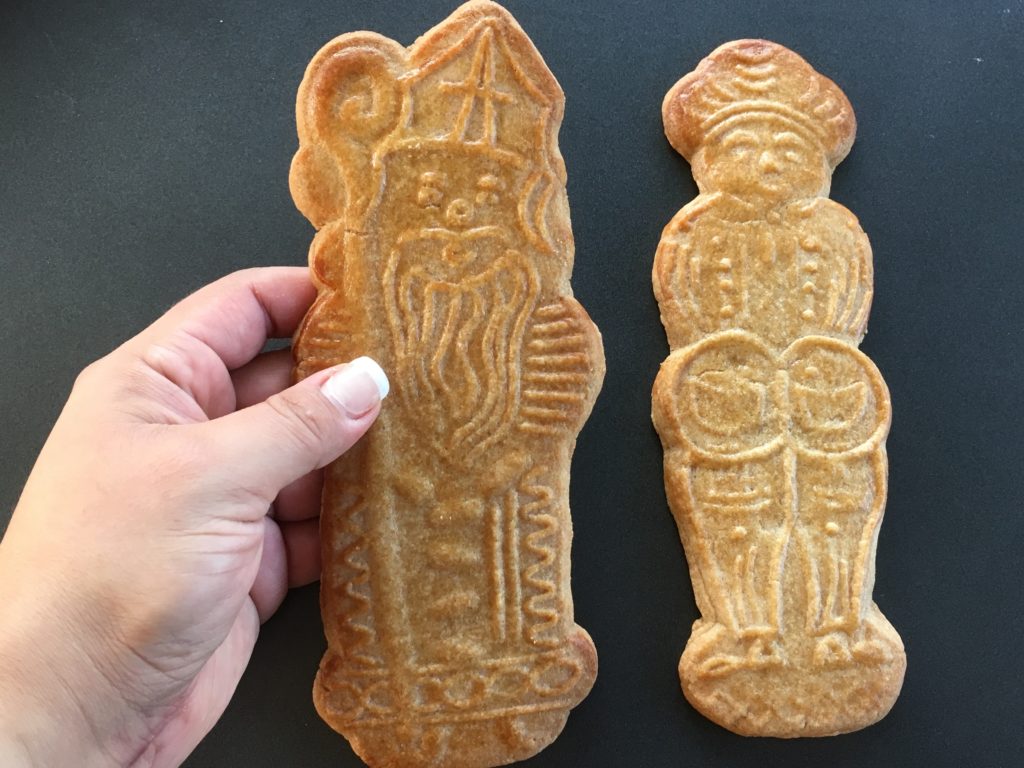
“17TH CENTURY
OTHER NAMES: spekulatius (German), Speculoos (French), Dutch windmill cookies, Belgian Spice Cookie, Biscoff cookies.
The name, Speculaas, is often used in Netherlands and may derive from Latin “speculum”, which means mirror. It refers to the images that are molded/mirrored from wooden stamp to decorate the cookie. Another explanation of the name refers to the Latin word “speculator” which may refer to a bishop or St Nicholas’ epithet “he who sees everything”. “Specerij”, the Dutch word for spice, is another possible origin.

Speculaas are spiced shortcrust biscuit originated from the Netherlands. There are different varieties in different parts of Europe: Dutch speculaas are more cake-like, Belgian speculaas are heavily spiced cookies. German speculaas are also cookie-like, but less spiced. In order to make Speculaas, a mixture of spice called “speculaaskruiden” (speculaas spices) is required. Speculaaskruiden contain at least cinnamon, cloves, mace and ginger, and these spices to taste: pepper, cardamom, coriander, anise seeds and nutmeg; and those spices did not become commonly available until the 17th century provided by the “Dutch East India Company.”
Historically, the cookies were serve on December 5 and 6 to celebrate St. Nicholas’ Day; thus speculaas were traditionally created in the shape of St. Nicholas in order to honor the life of St. Nicholas. St. Nicholas (or known as Santa Claus or Sinterklaas) was born in the late 3rd century in Patara (an ancient city in Turkey). Although he had a wealthy background he actually spent his life giving his money and gifts to the poor. He died on December 6 in the 4th century, and many still wanted to honor his spirits of generosity and kindness so they began to celebrate on December 6 as St. Nicholas’ Day.
As a tradition on St. Nicholas Eve in the Netherlands and Belgium, children will put shoes by the chimney before going to bed, and well-behaved children are rewarded by speculaas cookies in their shoes. Today Speculaas are still essential to serve on the Feast of St. Nicholas but are also popular during the Christmas season”.
sweetoothdesign.com


